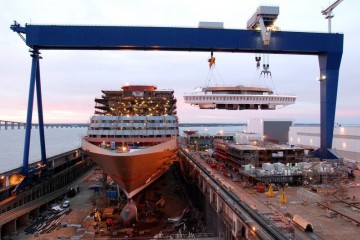The owl of Minerva only flies at night, but it already seems fairly evident that global policy-making will be radically different from 21st January 2017. In many fields, new arrangements are needed that rely less on the current architecture of global institutions supported by nation-states willfully delegating part of their authority and implementing measures that are the result of a global compromise. New arrangements could be centered around cities, firms or civil society. Within the field of climate change and maritime transport we could expect the role of ports to become rapidly more important.
The relation between climate change and ports is very asymmetric. On the one hand, heavy coastal infrastructure at ports is very vulnerable to the effects of climate change, and they face high costs to adapt to rising sea levels. At the same time, port emissions account for a very small share of total global emissions, so ports have very limited room to actually mitigate the broader impact of carbon emissions.
The recent United Nations summit on climate change, COP22, highlighted the concern that has grown around the world since the U.S. presidential election victory of Donald Trump, who has promised to cancel the U.S. commitment to cut carbon emissions. This will probably also have a profound impact on discussions at the IMO where the US and US-dominated flags have ample of opportunities to drag their feet.
For ports, the stakes in this debate obviously are very high. Many of the world’s busiest ports are on ocean coastlines, often close to river deltas that are highly vulnerable to even small changes in sea levels. Research by the Organisation for Economic Cooperation and Development indicated the impact of climate change on port cities could amount to $3 trillion.
The supply-chain consequences of damage to a few large seaports could be enormous. Yet only a few ports have undertaken serious measures to adapt. The Port of Rotterdam has a climate policy and concrete adaptation measures, including a movable barrier to protect the access channel to the port from storm surges from the North Sea.
Part of the difficulty in addressing rising sea levels is that most ports have over the last decades moved their operations towards to the sea, away from their relatively more protected position closer to cities. Offshore ports may have advantages in handling very big ships without hindering urban populations, but they are certainly not the easiest to protect from climate change impacts. Moreover, most ports only think of adaptation when they expand and add new terminals.
As sea levels rise, the results may be particularly serious in the developing world. Many ports there have high flooding risks but limited means to adapt to climate change risks. In the coming decades, multilateral development banks and other global actors will need to step up adaptation programs for ports in developing countries in order to sustain economic development goals. Ports would be logical targets for a future green climate fund.
Ports themselves also are sources of carbon emissions, mainly from fuel consumption of cargo handling equipment, like cranes and port tractors. However, these emissions represent only a very small share of total global emissions, perhaps less than 0.01%. The great majority of ports do not measure their carbon footprint, an omission that needs to be corrected. Port emissions are not on the radar screen of governments, and port emissions are not mentioned in the nationally determined contributions submitted by states prior to the Paris Climate negotiations.
As key nodes in maritime supply chains, ports could play a substantial role in mitigating emissions from shipping. Emissions from international shipping represented 2.2% of total global emissions in 2012, and under some scenarios this share increases to 17% in 2050.
Ports could nudge freight transport towards a lower-carbon development path through tougher regulations, improved infrastructure and incentives. Some ports have phased out dirty port trucks via truck retirement programs, for instance, and greater use by the shipping sector of liquefied natural gas and cleaner dockside power depends on the availability of LNG and of the proper shore power facilities at ports.
More ports are offering rebates on port tariffs for ships that emit less pollution. Offering such incentives can be challenging, however, as ports compete with each other.The shipping companies that ports try to nudge into greener behaviour can fairly easily decide to ignore one port and go to another gateway. In order to avoid this, ports provide the carrots, but not the sticks. So in the end it is not the polluters who pay for the rebate for green ships. In most cases it is the port itself, which often means the taxpayer. A greater role for ports in driving the reduction of carbon emissions in shipping would require more coordination among ports to make sure that polluters pay.



